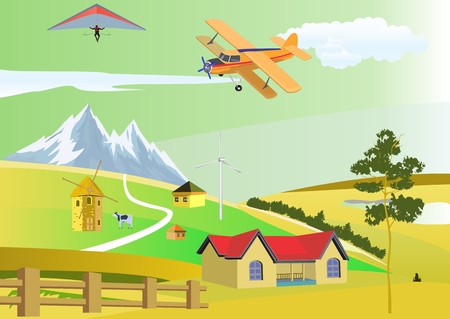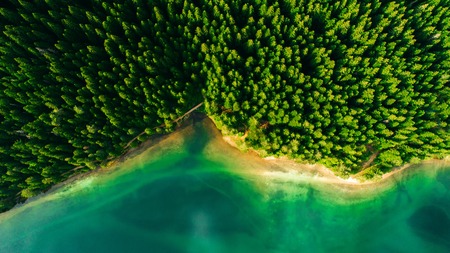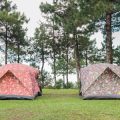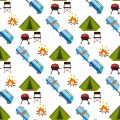Understanding Local Risks
Before you pitch your tent or set up your RV, it’s crucial to get familiar with the unique natural disaster risks in your chosen camping spot. Across the United States, different regions face very different threats—from sudden flash floods in the Midwest and South, to wildfires out West, tornadoes sweeping across the Great Plains, or even earthquakes along the West Coast. Start by checking local advisories, national park guidelines, and recent weather patterns for your destination. Consider how the local climate shapes these risks: Is it rainy season? Are drought conditions raising wildfire danger? Also, take note of the terrain—low-lying areas might be prone to flooding, while dense forests could increase fire hazards. Understanding these factors helps you make smart decisions about where to camp and how to prepare, keeping your outdoor adventure as safe as it is memorable.
2. Preparing Before Disaster Strikes
Preparation is everything when it comes to camping safely during natural disasters. Before you set out on your adventure, take time to pack an emergency kit with all the essentials you might need. Staying a step ahead can make all the difference in critical moments.
Pack Your Emergency Kit
Your emergency kit should be compact yet comprehensive. Here’s a quick breakdown of items you should include:
| Essentials | Purpose |
|---|---|
| First aid supplies | For minor injuries and emergencies |
| Flashlight & extra batteries | To navigate in darkness or power outages |
| Bottled water & non-perishable food | Sustain yourself if stranded or delayed |
| Whistle & multi-tool | Signal for help and handle basic tasks |
| Portable phone charger (power bank) | Keep communication lines open |
| Weather radio (NOAA recommended) | Receive real-time alerts and updates |
| Copies of important documents | ID, insurance, and emergency contacts |
Monitor Weather Updates & Stay Informed
Before and during your trip, regularly check weather forecasts from trusted sources like the National Weather Service or local news channels. Download weather apps that send push notifications for severe conditions. This proactive approach helps you make informed decisions and adjust your plans as needed.
Share Your Location With Loved Ones
Always let someone know where you’ll be camping and how long you plan to stay. Share your camp coordinates or drop a pin using apps like Google Maps or Life360. This simple gesture can save precious time if a rescue becomes necessary.
Know Evacuation Routes & Emergency Procedures
No matter how familiar you are with an area, always identify evacuation routes before settling in. Many campgrounds provide maps and instructions; keep these handy. If camping in a remote spot, study topographic maps and mark potential exits. Being aware of local emergency signals—like sirens for wildfires or flood warnings—will also help you act quickly if disaster strikes.

3. Choosing a Safe Campsite Location
One of the most important steps in keeping your camp safe during natural disasters is selecting the right campsite location. When youre out in nature, where you set up your tent or camper can make all the difference in an emergency. Avoid pitching your camp near riverbanks, dry creek beds, and low-lying areas. These spots may seem peaceful or convenient at first glance, but theyre especially vulnerable to flash floods and sudden water rises after heavy rain—even if the storm is miles away. Instead, look for higher ground that gives you a safe vantage point above possible flood zones.
Equally important is steering clear of areas dense with dry vegetation, especially during wildfire season. Tall grasses, pine needles, and dead branches can quickly turn a spark into a dangerous blaze. Choose a spot with minimal brush and plenty of open space around your tent or RV. If youre camping in forested regions, scan for any dead trees or limbs overhead (known as widow-makers) that could fall during strong winds or storms.
Take time to survey your surroundings for potential hazards. Are there steep slopes nearby that could lead to rockslides? Is there evidence of previous flooding—like debris caught in branches—or burn scars from past wildfires? Use local knowledge, ask rangers about recent weather patterns, and check posted alerts before settling in. Prioritizing safety over convenience ensures your camping experience remains both memorable and secure, no matter what Mother Nature throws your way.
4. Fire & Flood Safety Best Practices
When it comes to camping during natural disasters, prioritizing fire and flood safety can make all the difference. Staying prepared is not just about comfort—its about keeping everyone safe, especially in unpredictable situations. Here’s how you can elevate your camp’s safety standards:
Fire Safety Essentials
- Follow Local Fire Bans: Always check for fire bans or restrictions before lighting any fires. Most U.S. national and state parks update these regulations daily, especially during wildfire season.
- Keep Fire Extinguishing Tools Close: Have a bucket of water, shovel, and a fire extinguisher within arm’s reach whenever you have an active fire. Make sure everyone knows where these tools are stored.
- Never Leave a Campfire Unattended: Fires can spread quickly, especially in dry conditions. Assign someone to be “fire watch,” or better yet, fully extinguish the fire if you need to leave the area even briefly.
Campfire Do’s and Don’ts Table
| Do | Don’t |
|---|---|
| Build fires in designated rings or pits | Create new fire pits in unauthorized areas |
| Douse with water until cold to the touch | Bury hot coals or ashes with soil only |
| Store flammable items away from flames | Leave combustibles near the campfire |
| Supervise children and pets closely | Let kids play unsupervised near fires |
Flood Protection Tips
- Avoid Low-Lying Areas: Set up camp on higher ground whenever possible. Valleys, riverbanks, and washes are prone to flash flooding—these areas can fill with water with little warning after heavy rains.
- Elevate Your Gear: Use waterproof totes or raised platforms for storing food, electronics, and sleeping bags. This prevents damage if unexpected rain or runoff reaches your site.
- Monitor Weather Alerts: Sign up for local weather notifications on your phone. U.S.-based services like NOAA Weather Radio or FEMA alerts are reliable sources for real-time updates.
Packing Checklist for Fire & Flood Safety
| Item | Purpose |
|---|---|
| Fire extinguisher (ABC type) | Puts out different types of fires quickly |
| Shovel & bucket of water/sand | Douses flames and manages ashes safely |
| Tarp & waterproof totes | Keeps gear dry and elevated during rain or floods |
| Noaa weather radio / smartphone alerts app | Keeps you informed about emergency warnings on site |
| Campsite elevation stakes/flags | Makes high-ground spots easy to find for setup and evacuation routes |
The bottom line: smart preparation and mindful choices help ensure that everyone enjoys the beauty of nature while staying protected from its risks. Respect local regulations and prioritize both fire and flood readiness—your peace of mind is worth it.
5. Staying Connected and Informed
When you’re camping in the great outdoors, staying connected and informed can be a literal lifesaver during natural disasters like floods, wildfires, or severe storms. Always bring a reliable weather radio—preferably one that’s battery-powered or has a hand-crank feature—so you can receive real-time alerts even when cell service is spotty. Turn on emergency notifications on your smartphone; these government-issued alerts will keep you posted about sudden changes, evacuation orders, or safety updates tailored to your area.
It’s smart to check in with local park rangers or forest service stations before setting up camp. Rangers have firsthand knowledge of current conditions and can give you the latest updates or warnings specific to your location. Establish a group communication plan: make sure everyone knows who to contact, where to meet if separated, and how to signal for help if needed. Designate an emergency contact outside the camp who can relay information if local communications go down.
Knowing where to get help is crucial. Familiarize yourself with the nearest ranger station, hospital, or evacuation point. Share this information with everyone in your group so there’s no confusion if a crisis hits. By blending technology with good old-fashioned preparedness, you’ll ensure your group stays safe, connected, and ready to respond no matter what Mother Nature throws your way.
6. Evacuation Planning and Emergency Response
When it comes to camp safety during natural disasters, having a well-thought-out evacuation plan is absolutely essential. Start by gathering your group and collaboratively creating a clear evacuation strategy tailored to your campsite’s specific layout and risks. Identify all available exits—whether they’re main trails, service roads, or alternative routes—and make sure everyone knows exactly where they are.
Designate Safe Meeting Points
Pick easy-to-find meeting points that are safely away from potential hazards like flood zones or fire-prone areas. These should be marked on your map and physically recognizable in case of low visibility conditions. Explain the importance of these locations to everyone in your group and ensure that each person understands how to get there quickly, even if separated.
Review Procedures Regularly
Don’t just create an evacuation plan—review it together frequently. Walk through the steps with your group so everyone knows what to do if disaster strikes. Discuss roles: Who grabs the emergency kit? Who checks for stragglers? Having clear responsibilities reduces confusion during high-stress moments.
Practice Makes Prepared
Hold mock drills at least once during your trip. Simulate scenarios like rapid flooding or advancing wildfire smoke so everyone can practice evacuating calmly and efficiently. Treat these drills seriously—they’re not just for peace of mind but for real-world readiness. Remember, preparation and teamwork are your best defenses when nature throws a curveball.
7. Post-Disaster Assessment and Next Steps
After the immediate threat of a natural disaster has passed, it’s crucial to prioritize safety before resuming your camp activities. Wait for official all-clear signals from local authorities or emergency services—never assume it’s safe just because the weather seems to have improved. Once you receive confirmation, return carefully and approach your campsite with heightened awareness.
Inspecting Your Campsite for Safety
Upon arrival, conduct a thorough inspection of your surroundings. Look for hazards such as unstable trees, downed power lines, washed-out paths, or smoldering embers if there was a wildfire. Pay special attention to changes in the landscape caused by floods or heavy winds, including erosion or newly formed water channels. If you find anything dangerous or suspicious, report these hazards immediately to park rangers or local authorities to prevent injuries and help with community recovery efforts.
Lending a Hand and Supporting Others
Natural disasters can affect entire communities, not just individual campers. Check on neighboring campsites and offer assistance where it’s needed—sometimes lending a hand can make all the difference in someone else’s recovery process. Sharing resources, information, or simply offering reassurance helps foster a strong sense of community in the outdoors.
Reflecting and Preparing for the Future
Once everyone is safe and accounted for, take time to reflect on your experience. Ask yourself: What worked well? What could you improve next time? Document lessons learned and update your emergency plans accordingly. Consider sharing your insights with fellow campers or online communities dedicated to outdoor safety—your story could help others stay safer during future emergencies. By learning from each experience, you’ll be better equipped to keep your camp—and your loved ones—safe during any natural disaster that comes your way.


